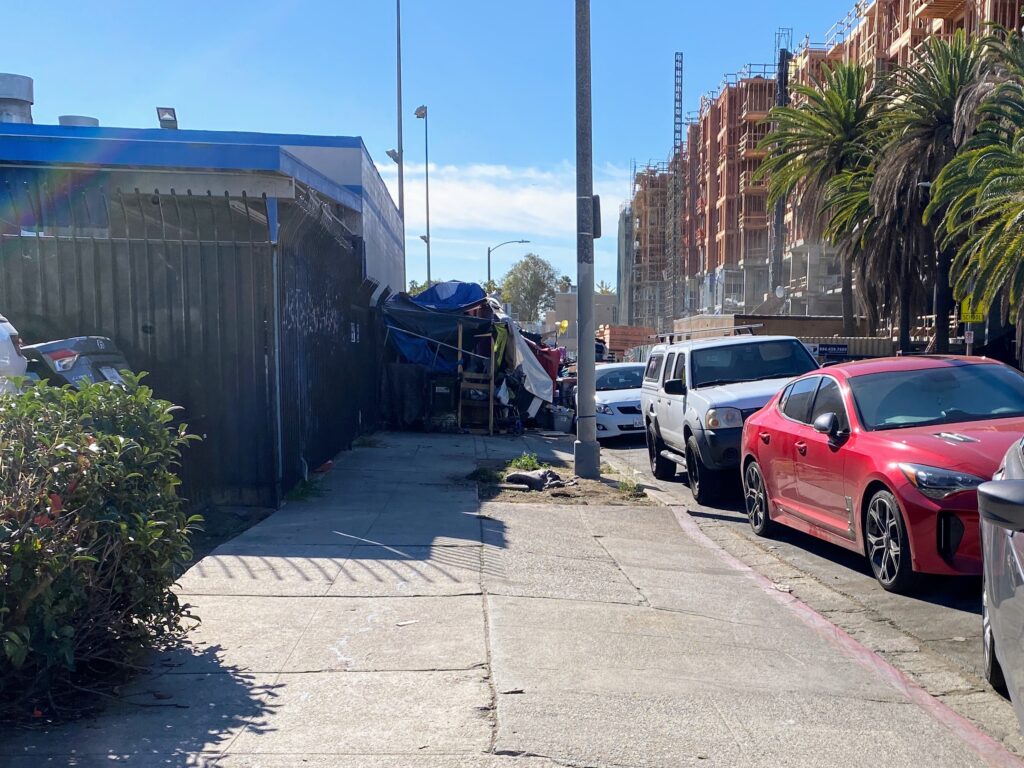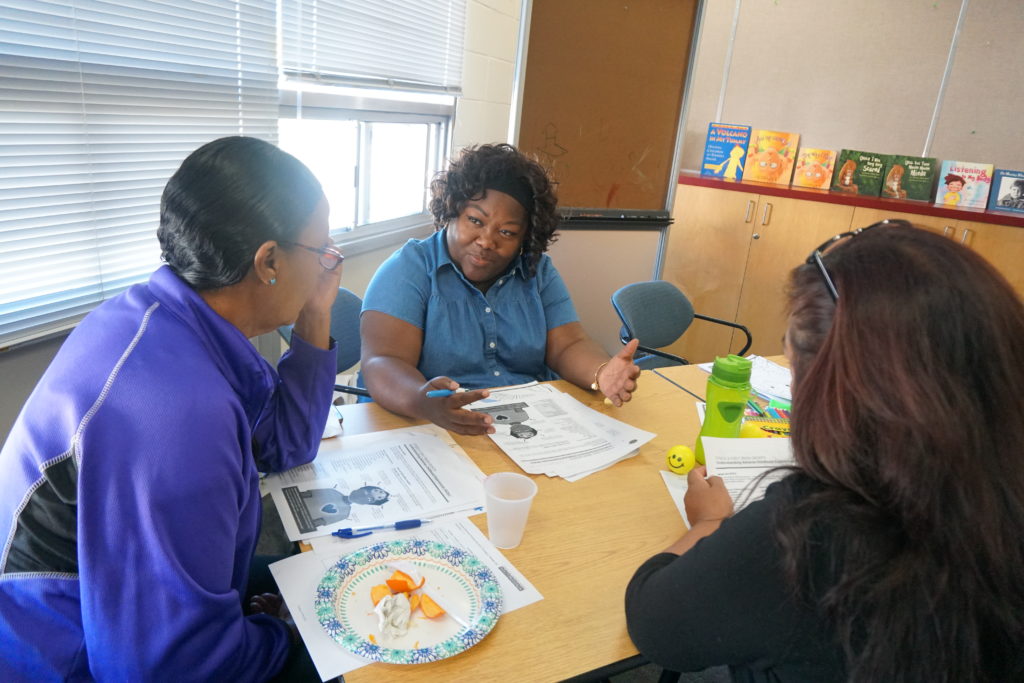
Encampments line the street that runs along Virgil Middle School’s lower field in Los Angeles County on November 30, 2022.
Credit: Kate Sequeira / EdSource
Homelessness and housing are at the center of political, policy and budget conversations across California, with indelible images of tents on sidewalks and people struggling against addiction and mental health often driving our understanding of the crisis.
But homelessness is not only a story of encampments or shelters; it is a story of women, children and families, who are among the fastest-growing populations of people experiencing homelessness. These are too often the invisible faces of this crisis, and we must recognize them and act urgently to deliver solutions.
According to the McKinney-Vento Homeless Assistance Act, students qualify as homeless if they lack a fixed, regular and adequate nighttime residence. This includes children who live doubled or tripled up with other families, in hotels, motels, shelters or other temporary arrangements.
Today, Los Angeles County serves 1.3 million students across 80 school districts, with 47,689 students identified as experiencing homelessness in 2022-23.
These figures do not include our earliest learners — children from birth to transitional kindergarten — or the many families on the brink of housing instability, often one emergency away from becoming unhoused. Young children in unstable housing situations are among the most vulnerable, with their development and well-being deeply impacted by housing insecurity.
In Los Angeles County, voters are weighing Measure A, a citizens’ initiative that would repeal and replace the existing ¼ cent homelessness sales tax, set to expire in two years, with a new, ½ cent sales tax. The measure, tied to accountability and results, is expected to bring in $1.1 billion annually to the county to fund affordable housing, mental health and substance abuse services.
Crafted by a coalition of housing experts, mental health professionals, labor leaders and community advocates, Measure A applies lessons learned from past efforts to expand investments in mental health and substance abuse services to get unhoused Angelenos off the streets and into treatment, increase resources for housing to make it more affordable for everyone, require accountability with clear goal-setting, regular audits and spending reports, and move funding away from programs that do not show proven results.
Measure A also establishes a new governance approach to deploy resources into one unified plan for addressing homelessness and the housing crisis. This plan is also informed by a Leadership Table made up of a cross-section of community leaders who will make funding and policy decisions about how these critical resources are spent that includes seats for education agency leaders and experts.
We believe that the innovations in Measure A would help develop stronger collaborations between school districts, housing agencies and nonprofits to offer wraparound services for families and create systems that make it easier for families to self-identify without stigma. By expanding housing programs that prioritize families and include transitional housing options connected to schools, we can better ensure that no student falls through the cracks.
On the ground, our dedicated teachers, administrators and campus staff are navigating the challenges of homelessness with our families every day. For example, recently we had a single mother facing homelessness send her older daughter who had special needs to live with relatives, while she tried to find housing with her younger daughter. They moved around often, and getting to school was difficult.
The school worked with the family to arrange transportation for the younger daughter so she could stay in school and helped the mother find crisis housing. Once the family was in temporary housing, the mom brought her older daughter back home, and the school helped set up transportation for her as well, allowing both children to attend school consistently.
Measure A would help provide the dedicated resources for housing programs and critical services that our communities need to weather these challenges without disrupting their education to break the cycle of instability.
Without stable housing, students struggle to succeed academically and emotionally, leading to long-term consequences for our communities. By shifting some of the county’s homelessness funding toward preventive and family-focused solutions, we can make a lasting difference in the lives of children and help break the cycle of poverty and homelessness.
We must recognize the invisible faces of homelessness and prioritize their needs. We owe it to our students and families to ensure sustained funding, accountable spending, and a holistic, regional approach that expands our understanding of homelessness beyond individuals on the street to include students and families living in unstable housing situations. We must center on preventive and family-focused solutions, or risk losing the potential of an entire generation. It’s not just a matter of education; it’s a matter of equity, compassion, and justice, and a thriving future for California.
•••
Debra Duardo, M.S.W., Ed.D., is the Los Angeles County superintendent of schools. Miguel A. Santana, is the president and CEO of the California Community Foundation.
The opinions expressed in this commentary represent those of the authors. EdSource welcomes commentaries representing diverse points of view. If you would like to submit a commentary, please review our guidelines and contact us.




